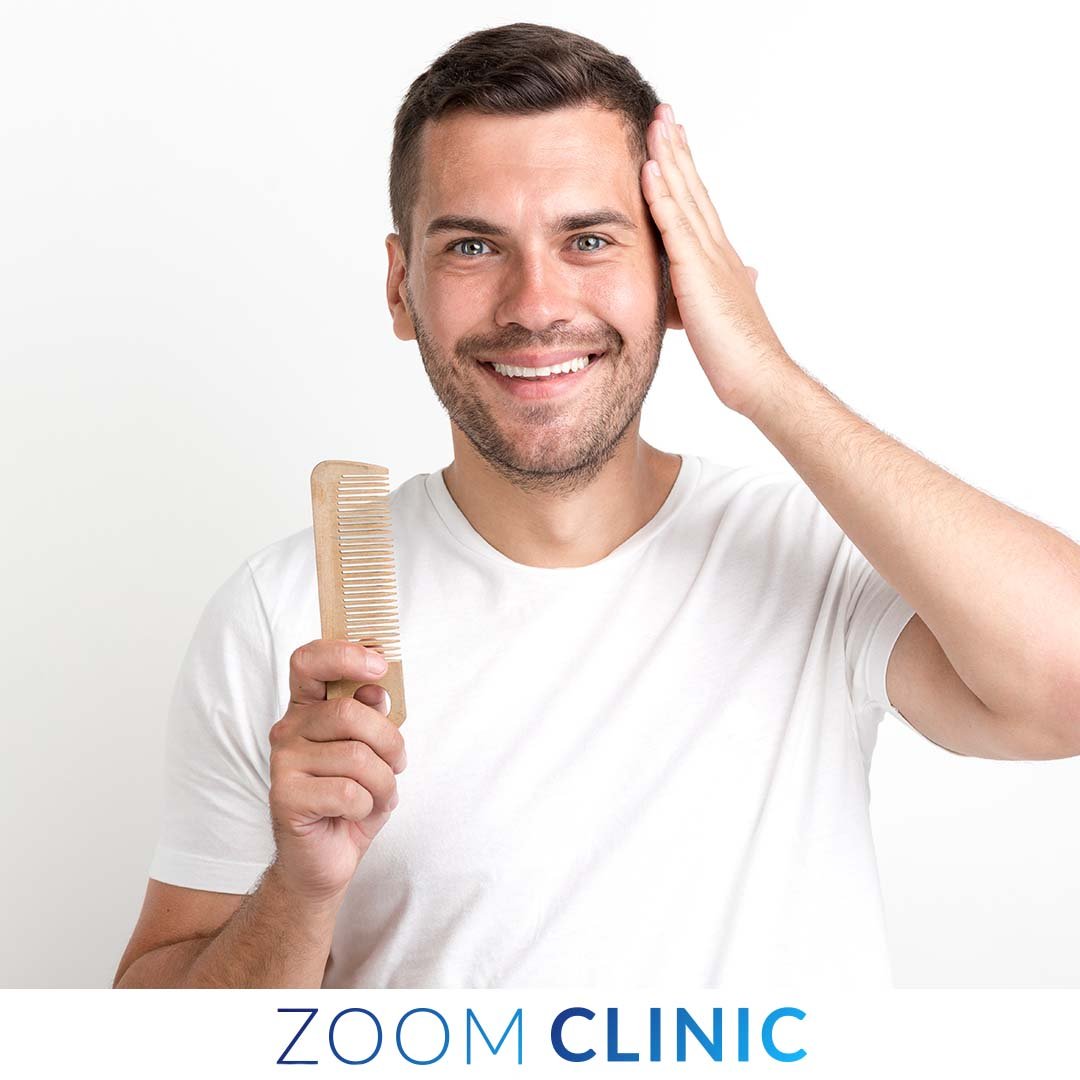Hair transplants can be a life-changing solution for those struggling with hair loss, effectively restoring hair and self-esteem. However, the journey to healthy, natural-looking hair doesn’t end after the fue hair transplant procedure.
Maintaining the health and appearance of your newly transplanted hair requires careful post-op care and long-term hair maintenance.
This comprehensive guide offers expert advice and practical tips for ensuring the best possible outcomes after a hair transplant.
Table of content
Understanding the Hair Transplant Procedure
What Is a Hair Transplant?
A hair transplant is a surgical procedure designed to address hair loss by moving hair follicles from a donor area (typically the back or sides of the scalp) to a recipient area where hair is thinning or balding.
The Healing Process After Hair Transplant Surgery
The healing process after a hair transplant surgery is critical to success. Newly transplanted hair follicles are delicate and require proper care to ensure they take root and begin to produce healthy hair growth.
The healing process typically involves several stages, including initial healing, the shedding of transplanted hairs (known as “shock loss”), and the gradual growth of new hair.
Post-Op Care: The First Week
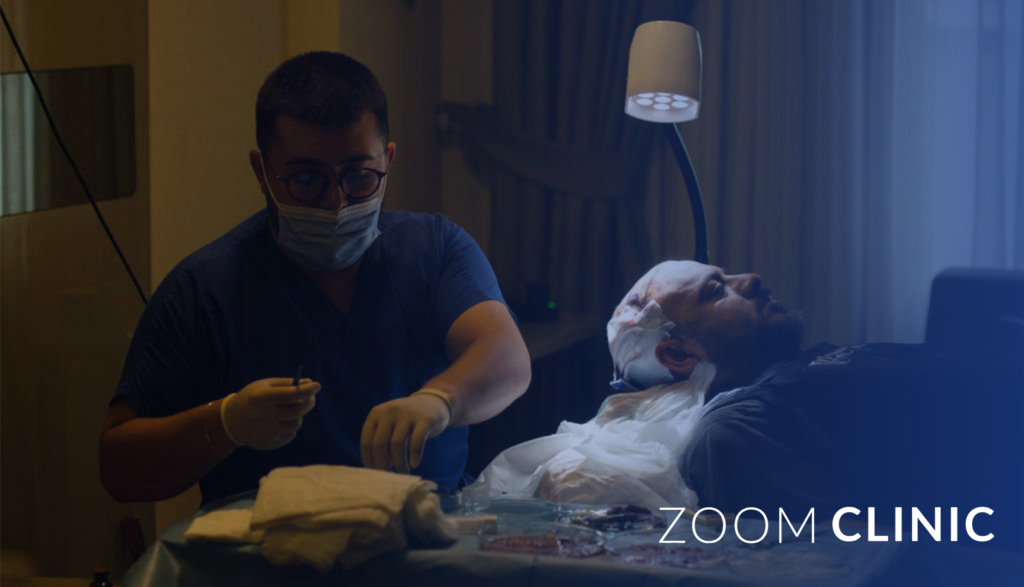
The Importance of Immediate Post-Op Care
The first week after your hair transplant is crucial for setting the stage for healthy hair growth. During this time, your scalp will be healing, and the newly transplanted hair follicles will be at their most vulnerable. Proper care during this period is essential to prevent complications and ensure the best possible outcome.
Gently Wash Your Hair
Washing hair after a transplant is essential to keeping the scalp clean and preventing infection, but it must be done with care.
First Wash: Most patients are advised to gently wash their hair for the first time about 48 hours after the surgery. Use a special medical shampoo your surgeon provides or a mild, sulfate-free shampoo.
Technique: Use lukewarm water and avoid direct water pressure on the transplanted area. Gently pat the scalp instead of rubbing it, and allow the water to rinse through your hair rather than scrubbing. This helps protect the transplanted follicles from damage.
Frequency: In the first week, wash your hair daily, but follow your surgeon’s instructions on the specific products and techniques.
Avoid Strenuous Exercise
During the first week, avoid strenuous exercise and activities that could increase blood pressure or cause sweating. This helps prevent swelling and protects the transplanted area from excessive movement or trauma.
Protect the Transplanted Area
Your scalp will be sensitive after the surgery, so it’s essential to protect the transplanted area:
Sleeping Position: Sleep with your head elevated to reduce swelling. Some patients find that sleeping in a recliner or with multiple pillows helps keep the head elevated and prevents pressure on the transplanted area.
Avoid Direct Sunlight: Protect your scalp from direct sunlight and avoid wearing tight hats that could irritate the recipient area. If you need to go outside, wear a loose-fitting hat that doesn’t rub against the scalp.
Manage Swelling and Discomfort
Swelling around the forehead and eyes is common after a hair transplant, especially in the first few days.
Cold Compress: Applying a cold compress to the forehead (but not directly on the transplanted area) can help reduce swelling. Use a cooling option like a cold pack wrapped in a cloth and apply it gently for short periods.
Medications: Your surgeon may prescribe antihistamines or other medications to help manage swelling and discomfort. Follow the prescribed dosage and instructions carefully.
The First Month: Establishing Healthy Hair Care Routines
Gradually Resume Normal Activities
As you enter the second and third weeks post-op, you can gradually resume normal activities but avoid anything that could strain your scalp or newly transplanted hair follicles.
Strenuous Exercise: After the first week, you may begin light activities like walking, but avoid strenuous exercise, heavy lifting, or any activity that causes excessive sweating for at least four weeks.
Hair Washing Routine: Continue washing your hair daily using the recommended special shampoo, but you can start applying a bit more pressure as your scalp begins to heal. Avoid hot water, which can irritate the scalp and strip natural oils.
Avoid Harsh Chemicals and Hair Products
It is important to avoid harsh chemicals and hair products that could damage or irritate the scalp during the first month.
Hair Spray and Gels: Avoid using hair spray, gels, or any styling products that contain alcohol or other harsh chemicals. These can dry out your scalp and interfere with the healing process.
Natural Oils: Opt for natural oils like coconut or argan oil to moisturize your scalp or hair. These oils can provide a softening effect without clogging the hair follicles.
Protecting Transplanted Hairs from Shock Loss
Shock loss, or the shedding of transplanted hairs, is expected within the first month after a hair transplant. While it can be concerning, it’s wholly regular and typically temporary.
Understanding Shock Loss: Shock loss occurs as the transplanted follicles enter a resting phase after surgery. The hair sheds, but the follicles remain intact and will eventually produce new hair growth.
Minimizing Shock Loss: To minimize shock loss, follow your surgeon’s post-op care instructions, avoid pulling or tugging at your hair, and be gentle when brushing or combing.
Long-Term Care: Promoting Healthy Hair Growth
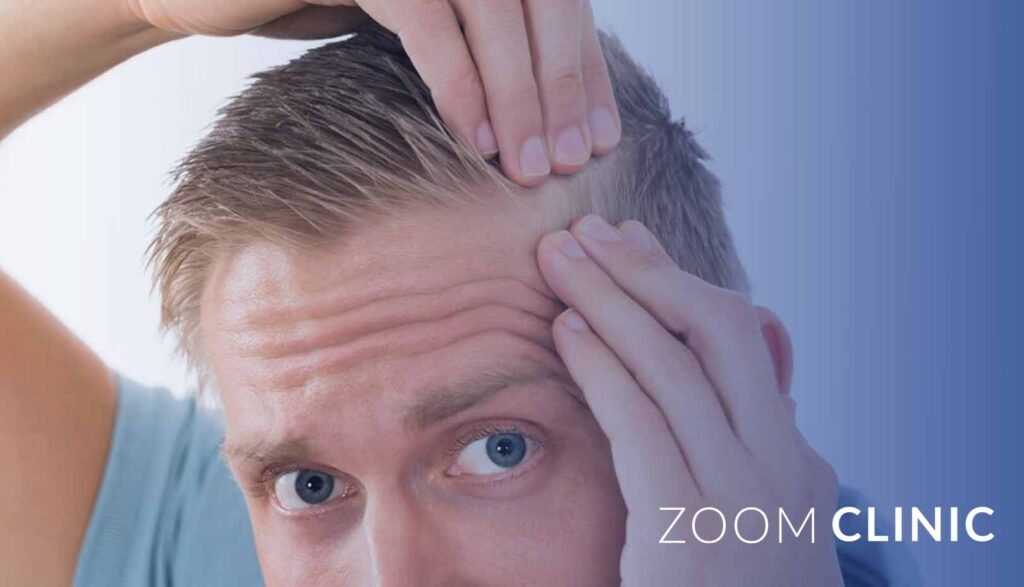
Proper Hair Washing and Care Techniques
Once your scalp has fully healed, you can establish a long-term hair care routine that promotes healthy hair growth and maintains the results of your transplant.
Shampoo Selection: Choose a mild, sulfate-free shampoo that is designed for sensitive or post-surgery scalps. Your surgeon may recommend a special medical shampoo to use long-term.
Washing Frequency: You can adjust the frequency of hair washes based on your scalp’s needs, but avoid washing your hair too frequently, as this can strip it of natural oils. Most patients find that washing their hair every other day is sufficient.
Water Temperature: Continue using lukewarm water for hair washes to avoid irritating the scalp. Warm water can open hair follicles, but hot water should be avoided as it can cause dryness and irritation.
Nutrition and Healthy Diet for Hair Growth
Maintaining a healthy diet is essential for promoting healthy hair growth after a transplant. Your hair follicles need proper nutrition to produce strong, healthy hair.
Nutrient-rich foods: Include a variety of nutrient-rich foods in your diet, such as fruits, vegetables, lean proteins, and whole grains. These foods provide essential vitamins and minerals that support hair health.
Supplements: Consider taking supplements like biotin, vitamin E, and omega-3 fatty acids, which are known to promote hair growth and improve the health of your scalp. Consult your doctor before starting any new supplements to ensure they are appropriate.
Avoiding Hair Thinning and Hair Loss
Even after a successful hair transplant, it’s important to continue caring for your hair to prevent thinning or further hair loss.
Minimize Heat Styling: Avoid using heat-styling tools like blow dryers, flat irons, and curling irons, as excessive heat can weaken hair and lead to breakage. If you must use these tools, apply a heat protectant spray first and use the lowest heat setting possible.
Avoid Harsh Treatments: Avoid chemical treatments like perms, relaxers, and hair coloring, especially in the first few months after your transplant. If you color your hair, opt for gentle, ammonia-free products and consult your surgeon about the best time.
Regular Trims: Regularly trimming hair can help prevent split ends and promote overall health. Trimming removes damaged hair and encourages new, healthy growth.
Protecting Your Scalp from Environmental Factors
Environmental factors such as sun exposure, pollution, and harsh weather conditions can impact the health of your hair and scalp.
Sun Protection: Protect your scalp from direct sunlight by wearing a hat or sunscreen designed for the scalp. UV rays can damage hair follicles and slow down the healing process.
Avoiding Harsh Weather: Protect your hair from harsh weather conditions, such as extreme cold or wind, by wearing protective headgear. Cold weather can dry the scalp, while wind can cause tangling and breakage.
Regular Check-Ups with Your Surgeon
Regular follow-up appointments with your surgeon are important for monitoring your progress and addressing any concerns you may have. Your surgeon can assess the health of your transplanted follicles, check for any complications, and provide personalized advice for maintaining healthy hair growth.
Managing Stress and Its Impact on Hair Health
Stress can significantly impact your overall health, including the health of your hair. High-stress levels can lead to hair thinning and slow the growth of newly transplanted hair.
Stress Management Techniques: Practice stress management techniques such as meditation, deep breathing exercises, and regular physical activity. These can help reduce stress levels and promote overall well-being.
Healthy Sleep Habits: Ensure you get enough sleep each night, as rest is crucial for the body’s healing process and maintaining healthy hair growth. Aim for 7-8 hours of quality sleep each night.
The Role of Proper Care in Achieving the Final Results
The Importance of Patience
Achieving the final results of your hair transplant takes time. Hair growth is a gradual process, and it may take several months to a year to see the full effects of the transplant. During this time, being patient and consistent with your hair care routine is important.
Celebrating Small Milestones
Celebrate the small milestones along the way as your hair begins to grow. Whether it’s the first signs of new hair growth, the reduction of scalp redness, or the ability to style your hair as desired, these milestones are important markers of your progress.
Regaining Confidence
For many people, hair loss can significantly impact self-esteem. A successful hair transplant can help restore not only your hair but also your confidence. Taking good care of your transplanted hair and watching it grow can be a rewarding experience that positively affects your overall self-image.
Zoom Clinic clients before and after Hair Transplant
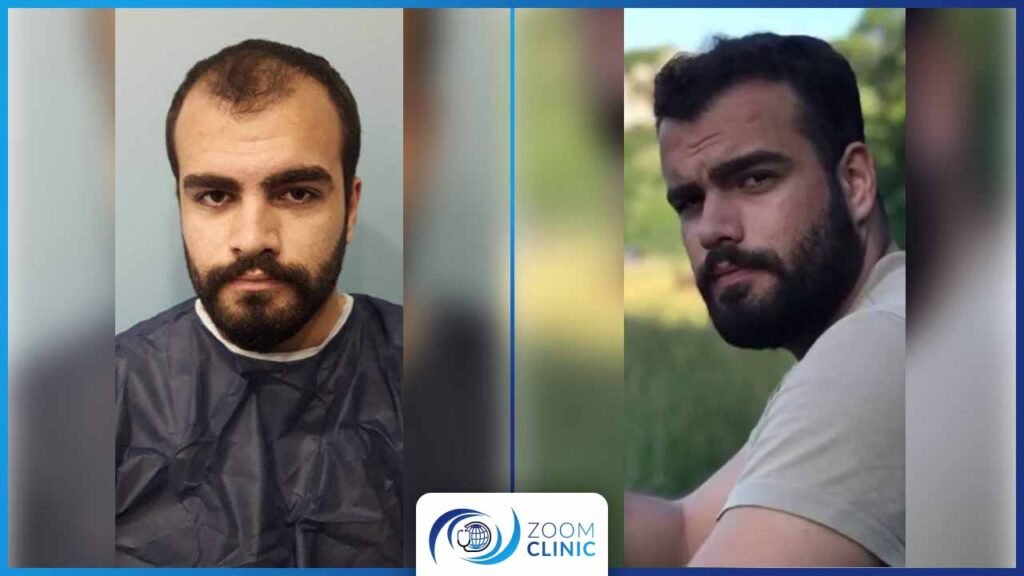
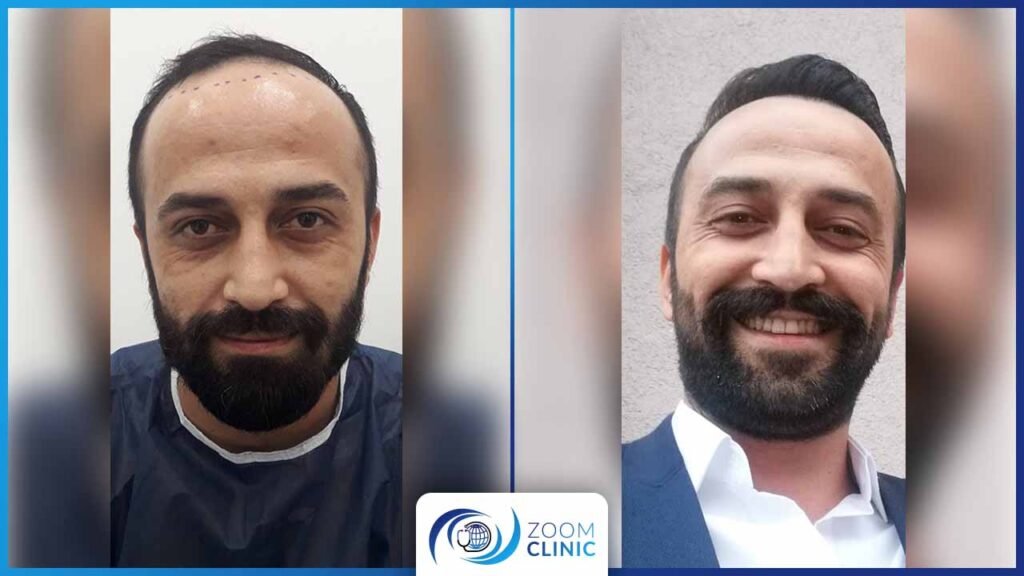
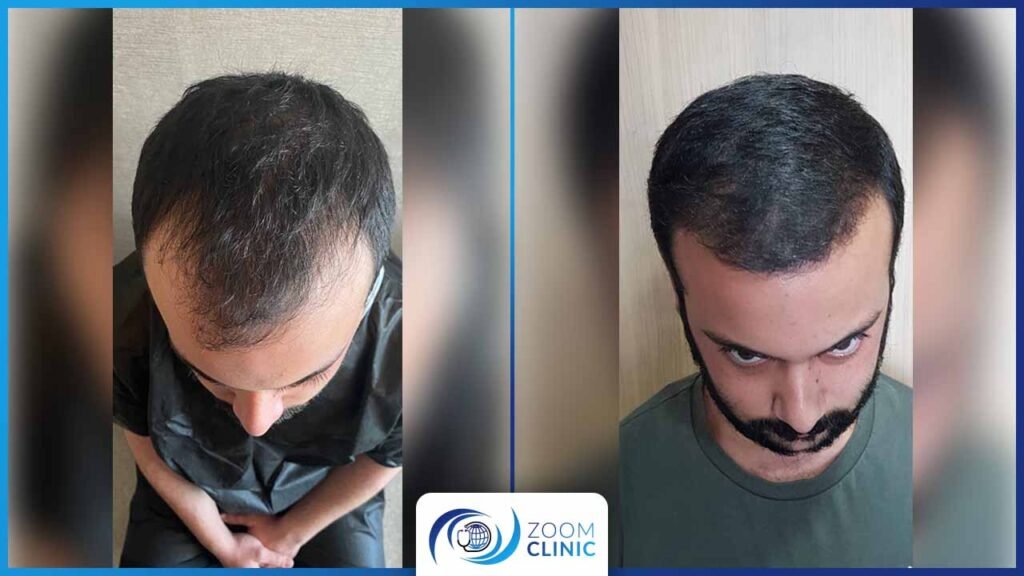
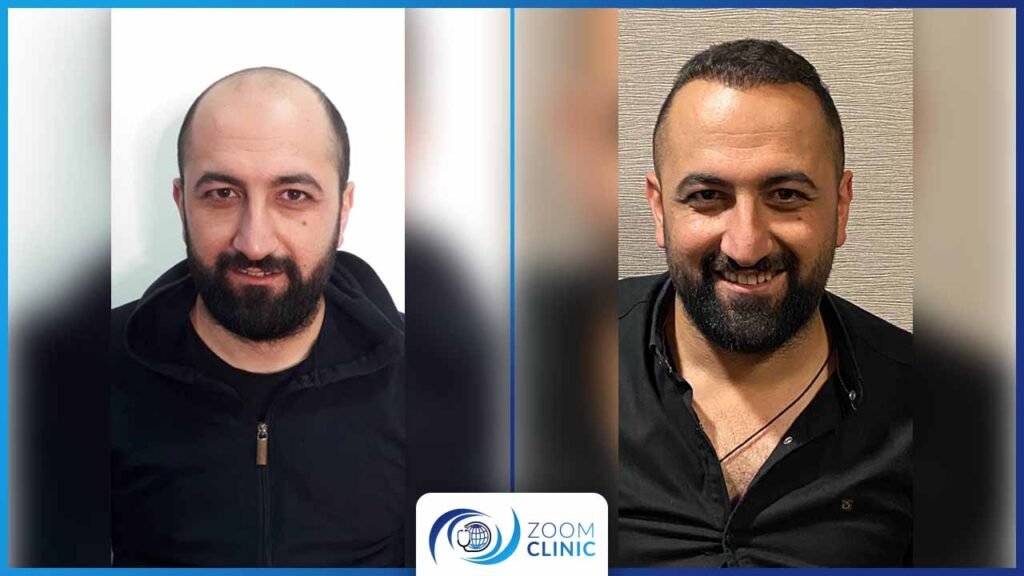
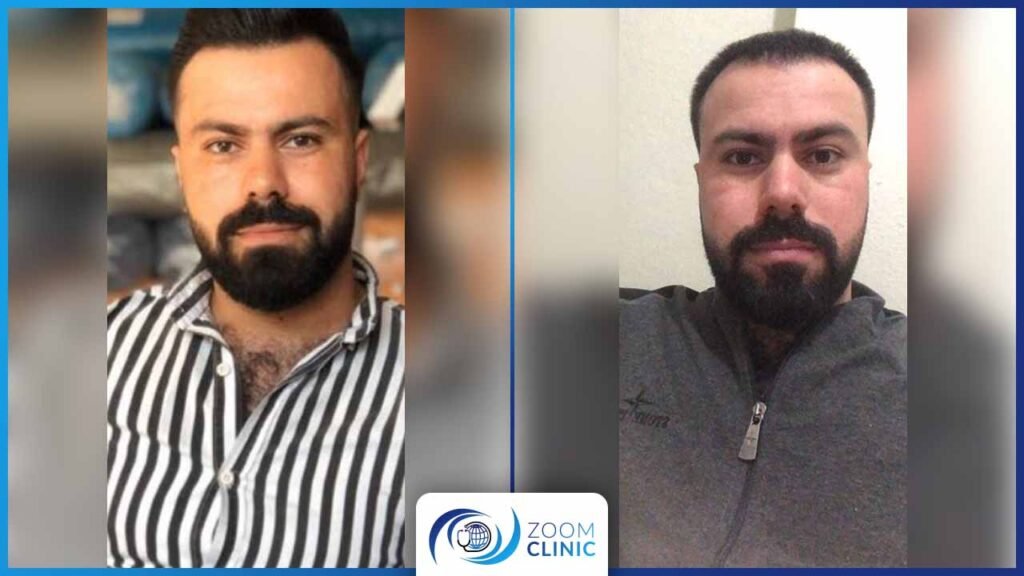
Conclusion: Achieving Healthy, Long-Lasting Results After a Hair Transplant
Maintaining healthy hair after a transplant requires proper post-op care, a healthy lifestyle, and a commitment to long-term hair maintenance.
Following the tips outlined in this comprehensive guide, you can support healthy hair growth, protect your transplanted follicles, and achieve the best possible results from your hair transplant surgery.
Whether you’ve recently undergone a hair transplant or are considering one soon, remember that proper care is key to the procedure’s success.
By taking the time to care for your scalp and hair, you can enjoy the full benefits of your hair restoration journey and regain confidence in your appearance.
Get the special offer today from Zoom Clinic
FAQs
1. How soon after a hair transplant can I wash my hair?
Most patients are advised to gently wash their hair for the first time about 48 hours after the surgery. It’s important to use a special medical shampoo or a mild, sulfate-free shampoo and to wash your hair very gently to avoid disturbing the newly transplanted hair follicles.
2. Is it normal for transplanted hair to fall out after the procedure?
Yes, it is completely normal for transplanted hair to fall out within the first few weeks after the procedure. This process is known as “shock loss,” and it occurs as the hair follicles enter a resting phase. The follicles remain intact and will start producing new hair growth within a few months.
3. When can I resume normal activities and exercise after a hair transplant?
You can gradually resume light activities such as walking after the first week, but it’s recommended to avoid strenuous exercise, heavy lifting, or activities that cause excessive sweating for at least four weeks after the transplant. Always follow your surgeon’s advice regarding activity levels during the recovery process.
4. What kind of shampoo should I use after my hair transplant?
Your surgeon may recommend a special medical shampoo to use during the initial recovery period. Once your scalp has healed, it’s best to continue using a mild, sulfate-free shampoo that is gentle on the scalp and hair. Avoid shampoos that contain harsh chemicals or alcohol.
5. How long does it take to see the final results of a hair transplant?
The final results of a hair transplant typically take several months to a year to become fully visible. Hair growth is a gradual process, and while you may see initial signs of new hair growth within a few months, the full results, including hair density and coverage, will continue to improve over time.
Read Also:
Direct Hair Implantation DHI Precision and Excellence in Hair Restoration

